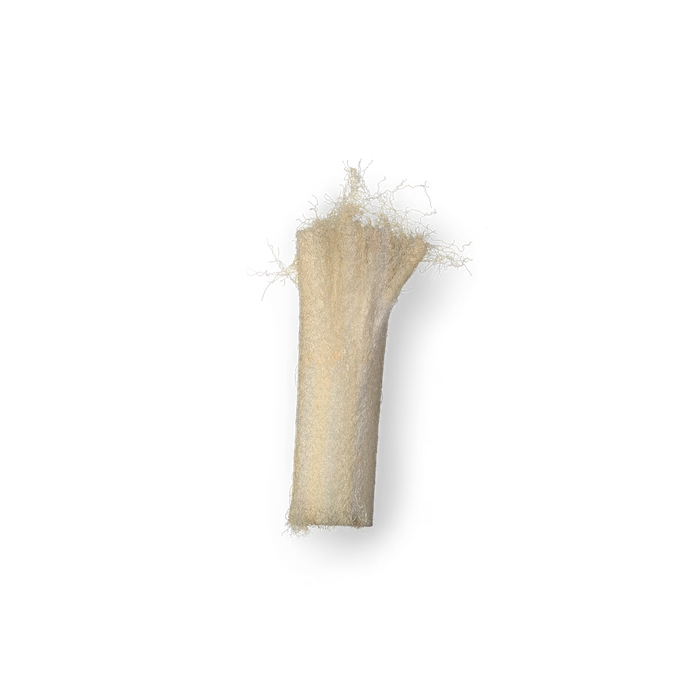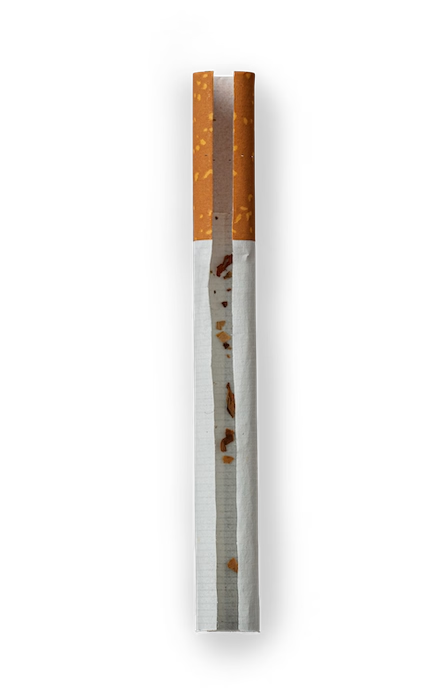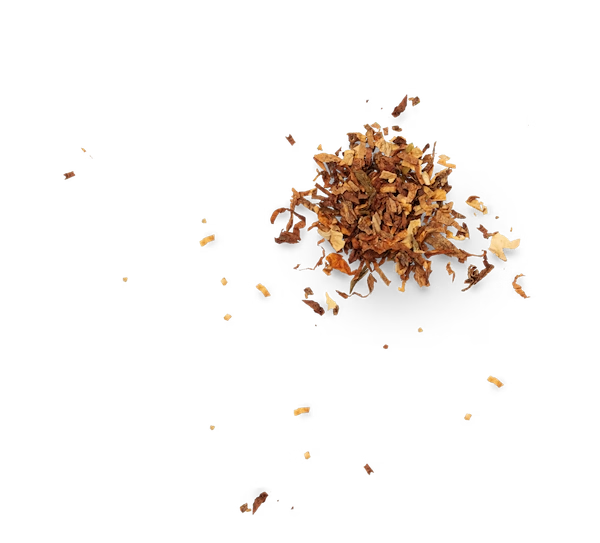煙草商一直明明知道香煙濾嘴無法讓吸煙變得更安全。12 煙蒂是由微塑料纖維製成,幾乎沒有過濾效果。3 煙草商的濾嘴騙局讓所有人都處於受害風險中,即使我們不吸煙也會同樣受害。來自香煙廢棄物的微塑料正污染世界各地及加州當地的土壤、食物和水。56 根據研究顯示,當微塑料進入我們體內時,會與腸道損傷、不育及DNA突變有所關聯。60561
煙草商正在加劇全球的塑料危機。8 我們應追究並讓他們為自己的謊言負責。


煙草商為追求利潤,從不讓真相成為阻礙,而他們對於香煙濾嘴的謊言,可能是有史以來最令人致命的謊言。19 煙草商甚至投入時間和金錢製造可改變顏色的濾嘴,以欺騙世人相信煙草商可以保護他們的肺部免受有害微粒的侵害。1019 但這完全是一個騙局,因為所謂的濾嘴卻幾乎沒有過濾效果。13
煙草商的蓄意謊言已經讓無數人生病及死亡。1 現在,由於微塑料煙蒂而產生特別危險的煙草污染,讓我們都身處危害風險中。1
微塑料煙蒂讓我們都身處危害風險中
香煙煙蒂是由成千上萬根細小的塑料纖維所製成,這些塑料纖維由於太小而無法被清理,而且它們可能無處不在。4 其實這並不足為奇,因為每年煙草商都會生產6萬億支附有所謂「濾嘴」的香煙。12 香煙煙蒂中的塑料如何生物降解?這就是問題所在:塑料並未被生物降解。13 這也是煙草商如何成為全球塑料危機的主要罪魁禍首。8

塑料濾嘴
每個濾嘴都無法生物降解,因為濾嘴是由超過15,000根微塑料醋酸纖維素所製成。413

捲煙紙
捲煙紙經過檸檬酸鉀等有害化學物質處理(以加快燃燒速度),並且可能內含有毒金屬鉛、鎘和砷。1415

煙草
煙草商在每支香煙中加入超過100種添加劑,使香煙更具成癮性,也更具危險性。1617
如果這還不夠糟糕,煙草商還用會污染我們環境的微塑料製造出濾嘴,即使他們曾斷然否認這一事實。6763 以下是有關煙草商騙局的真相,這些騙局已將我們所有人置於危險之中。
在1940和1950年代,隨著香煙對於健康的危害越來越明顯,煙草商因此製造出濾嘴,讓顧客認為他們在抽的是「更安全的香煙」。12 但這完全是一場騙局!因為濾嘴幾乎沒有任何過濾效果。3 但是煙草商的欺騙卻成功奏效:在1951年,市場上只有1%的香煙附有濾嘴;但到了1958年,幾乎半數的香煙都有濾嘴;到了1993年,幾乎所有的香煙都有濾嘴來過濾。32

煙草商一直知道他們的濾嘴無法使香煙更加安全。12 然後,他們發現濾嘴實際上可讓香煙的味道更溫和,使大眾以為香煙更「健康」,因而吸入更深。13 煙草商緊抓住這個吸引新客戶的良機,投入更多時間、金錢及資源,加倍努力繼續他們原已相當危險的「更安全香煙」騙局。3334
在1950年代,一位在雷諾煙草公司工作、名為克勞德·提格(Claude Teague)的化學家研發出「提格濾嘴」,可將濾嘴從白色轉變為棕色。29 顏色的變化使大眾誤認濾嘴可以保護其肺部免受香煙中有毒化學物質的危害。2
事實上,無論濾嘴變成什麼顏色,3這些「濾嘴」實際上什麼都無法過濾,甚至與特定類型的肺癌有關。33536

人類並非是煙草商各種謊言的唯一受害者,從野生動物到我們的海洋以至我們整個地球,都處於危害風險之中。13 以下就是原因。煙草商通過使用微塑料纖維製造香煙濾嘴以降低製造成本,3 但合成材料無法生物降解,這使得煙蒂在各方面都相當危險。13 煙蒂更內含有毒化學物質,單只一個煙蒂就可以殺死一隻小動物。156970 若將一個煙蒂浸泡在一升水中時,可以釋放出足以殺死魚類並威脅水生態系統的有毒化學物質。70 隨著煙蒂的堆積,微塑料及有毒化學物質會滲入我們的海洋、河流、湖泊和土壤中。711959 煙草商非常清楚他們的塑料產品正在破壞環境,但他們無論如何都仍要撒謊。37

煙草商希望我們相信,隨地可見的煙蒂及電子煙只不過是垃圾問題。3940 他們希望我們浪費時間在城市內安裝垃圾箱及清理海灘上。41424344454647 無情的煙草商更利用巧妙的公關活動,將煙草污染推卸給吸煙者並加以指責,同時還逃避責任、規避法規,並散佈徹頭徹尾的謊言。3948



請表達你對於煙草商欺騙大眾所造成危害的憤怒。你可以藉由高聲疾呼以改變現狀。









1. 請輸入你的郵政編碼以找到鄰近 對抗反擊煙草商的團體。12
2. 請填寫你的姓名及電子郵件
3. 請點擊「建立聯繫」以向你所在地 區的團體發送自動生成的電子郵 件。

Space for paragraph text of individul result - Maecenas tempus, tellus eget condimentum rhoncus, sem quam semper libero, sit amet adipiscing sem neque sed ipsum.
Space for paragraph text of individul result - Maecenas tempus, tellus eget condimentum rhoncus, sem quam semper libero, sit amet adipiscing sem neque sed ipsum.
Space for paragraph text of individul result - Maecenas tempus, tellus eget condimentum rhoncus, sem quam semper libero, sit amet adipiscing sem neque sed ipsum.
Space for paragraph text of individul result - Maecenas tempus, tellus eget condimentum rhoncus, sem quam semper libero, sit amet adipiscing sem neque sed ipsum.

